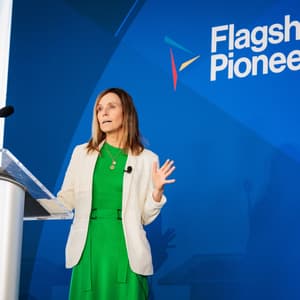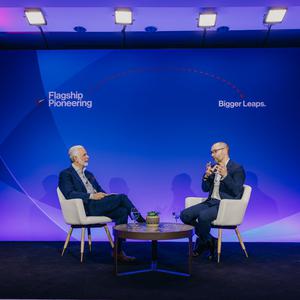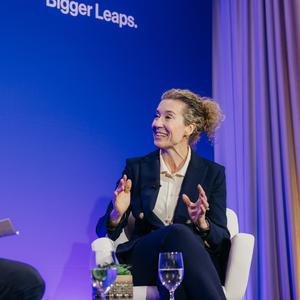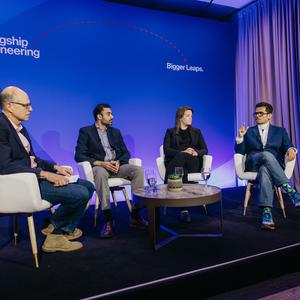“Return on Luck is a concept developed in the book Great by Choice. Our research showed that the great companies were not generally luckier than the comparisons—they did not get more good luck, less bad luck, bigger spikes of luck, or better timing of luck. Instead, they got a higher return on luck, making more of their luck than others. The critical question is not, Will you get luck? but What will you do with the luck that you get?” —Jim Collins
At Flagship Pioneering, we refer to this as “Biotech’s Moment;” our analogy to Collins’ “luck.” Thanks to a combination of factors—advances in the understanding of human biology, the discovery of new ways to observe and control biology, the flourishing of new modalities, the harnessing of the power of artificial intelligence and machine learning and other factors—we are newly capable of tackling ever larger, persistent problems in human health and do so with a higher probability of success (PoS). Tackling larger problems produces a bigger payoff and, if you can do so with a higher PoS and lower risk, value will rise geometrically. The current trend in the stock prices of publicly-traded biotech companies demonstrates this phenomenon.
But that’s only part of the story. The factors contributing to Biotech’s Moment are like a rising tide: they raise all boats. But a rising tide, just like Collins’ “luck,” isn’t enough to guarantee success, much less the greatest return. What really counts is what a company, or team of scientists does with the luck they’re given by living in this Biotech Moment.
At Flagship, we do a number of things to boost our “return on luck.” We:
- Innovate only in distant white spaces. Most people think this is a risky endeavor, but we respectfully disagree. Innovating in distant white spaces allows us to pursue very large value pools and amass foundational intellectual property; we rarely find direct competition; and we gain privileged access to future adjacencies. If we do our job properly, we’re setting ourselves up for an outsized payoff.
- Wring fundamental risk out of our projects early. Through a series of processes which, at their core, resemble natural selection, we create a vast idea space, subject our ideas to ruthless critiques and either adapt them to survive or discard them and move on; and then, with a small subset of those ideas, we go into our labs and run, over the course of a year, experiments designed to kill them. Those ideas which fail to die get the chance to live. By the time the first independent capital partner is invited to invest in a Flagship company, there has been on average three years of systematic company building and risk reduction on our own dime.
- Only build multi-product platform companies. A platform, for us, is a new understanding of biology or a new biological technology which can yield multiple products across different therapeutic areas. Our company, Moderna, is the quintessential example. If we’ve done our initial risk reduction properly, the chances the platform yields nothing are low. In contrast, if one product hits, it reads through to the rest of the platform synergistically. It surely takes more time, capital and perseverance to build a successful multi-product platform company relative to a single-asset vehicle, but the benefits of increasing the chances of an outsized payoff towers over the challenges
- Act as a principal owner. Successful innovation in distant white spaces requires deep alignment between owners and management. This type of close alignment doesn’t always come easily, but it’s so much easier to achieve when one management team engages with one principal owner. For that reason, we don’t syndicate governance to additional owners (the VC model) as we begin to build and finance our companies. That model clearly has its utility, but not for executing the kind of long-range innovations we pursue.
Through operating with these four, core principles we believe we bias in our favor the odds of success and of creating the greatest version of our companies, positioned for maximum value. We increase the size of the payoff, increase the PoS and reduce risk beyond what the Biological Century grants everyone.
The creation of every blockbuster drug, every cure for a rare genetic disease, every lifesaving vaccine translates to saving, extending or improving the quality of life of human beings. And that’s why we’re at our desks at dawn, working to maximize our return on the “luck” of this extraordinary moment.







